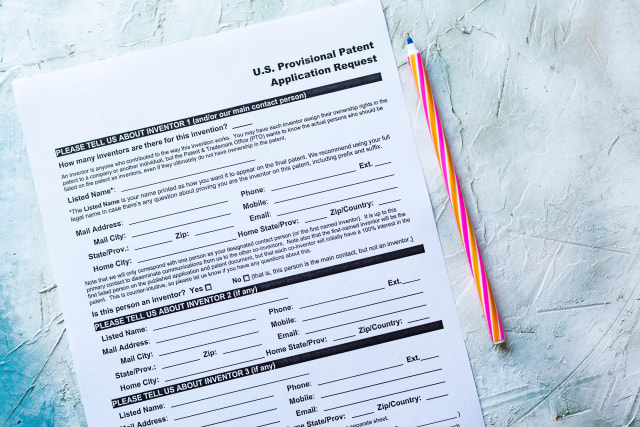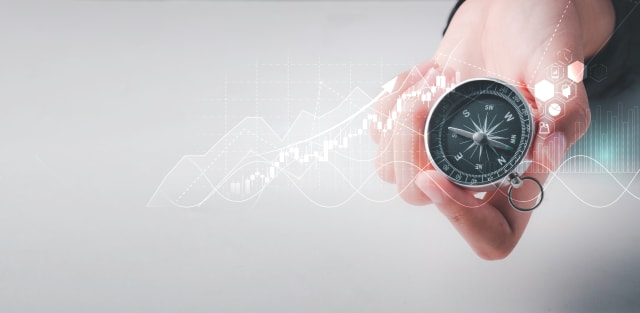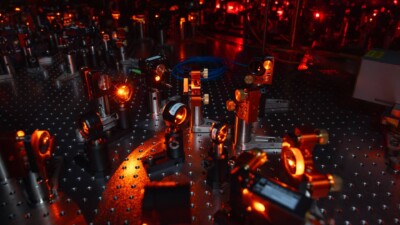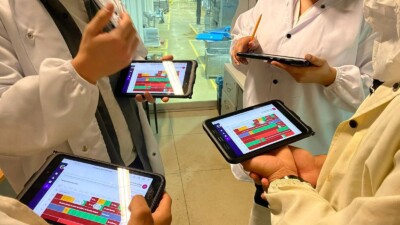Navigating new inventorship guidance from the USPTO regarding generative AI.
IP.com has sponsored this post.
Generative AI has undoubtedly reshaped innovation landscapes, ushering in a new era of creativity and efficiency. However, with great technological advancements come intricate legal and ethical considerations, particularly in the realm of inventorship. The United States Patent and Trademark Office (USPTO) plays a pivotal role in providing clarity and guidance regarding AI-assisted inventions, ensuring that innovators receive appropriate recognition for their contributions while upholding the integrity of the patent system.
Establishing clarity: Lessons from Thaler v. Vidal
The case of Thaler v. Vidal serves as a stark reminder of the importance of establishing clear guidelines for AI-assisted inventions. Dr. Stephen Thaler’s experience with his AI-generated invention application being denied highlighted the ambiguity surrounding inventorship in the context of AI. While AI undoubtedly played a significant role in the creation of the invention, the legal system ultimately affirmed the necessity of human involvement in the inventive process.
Guidelines for AI-assisted inventions: USPTO’s response to executive order directives
In February 2023, the USPTO released comprehensive guidelines addressing inventorship in AI-assisted inventions, pursuant to the directives outlined in “Executive Order on the Safe, Secure, and Trustworthy Development and Use of Artificial Intelligence” issued on October 30, 2023, by the Biden administration. These guidelines aim to provide clarity and consistency in patent applications involving AI technologies, serving as a roadmap for innovators and patent examiners alike, delineating the roles and responsibilities of human inventors and AI systems in the patenting process.

Key tenets of the USPTO guidelines
The USPTO guidelines establish fundamental principles that govern inventorship in AI-assisted inventions:
- Human Attribution: The guidelines reaffirm the principle that patent applications must attribute inventorship to natural persons who have made significant contributions to the inventive process. This ensures that human ingenuity remains at the forefront of innovation.
- AI as Tool, Not Inventor: While AI technologies can assist in various stages of the invention process, including ideation and optimization, they cannot be recognized as inventors themselves. This distinction preserves the accountability and transparency of the patent system.
- Ethical Considerations: Recognizing the ethical implications of AI integration in innovation, the guidelines emphasize the importance of responsible AI usage. Innovators are encouraged to consider ethical considerations such as data privacy, bias mitigation and societal impact when deploying AI technologies in the invention process.
Examples of AI-assisted inventions
To illustrate the application of the USPTO guidelines in real-world scenarios, consider the following examples of AI-assisted inventions:
- Drug Discovery: Pharmaceutical companies are increasingly leveraging AI algorithms to expedite the drug discovery process. While AI systems can analyze vast datasets and predict potential drug candidates, human scientists play a critical role in interpreting the results, designing experiments and validating the efficacy and safety of the identified compounds. In this scenario, human scientists would be recognized as inventors, with AI technology serving as a supportive tool.
- Automotive Design: Automotive manufacturers utilize generative AI algorithms to generate innovative designs for vehicles, optimizing factors such as aerodynamics, safety and energy efficiency. However, the final design decisions and engineering specifications are determined by human designers and engineers, who leverage AI-generated concepts as inspiration and guidance. In this case, the human designers and engineers would be credited as inventors, with AI technology facilitating the design process.
- Biomedical Imaging: AI-powered imaging technologies enable healthcare professionals to analyze medical images with unprecedented speed and accuracy, aiding in the diagnosis and treatment of various conditions. While AI algorithms can assist in detecting anomalies and providing diagnostic insights, the final interpretation and decision-making rest with human radiologists and clinicians. Thus, the inventors would be the human professionals who developed and applied the AI-assisted imaging techniques.
In each of these examples, the USPTO guidelines would require attributing inventorship to the human individuals who contributed their expertise, creativity and judgment to the invention process, while acknowledging the supportive role of AI technologies.
Empowering innovators in the AI era
In the pursuit of rapid innovation, many engineers and inventors are seeking ideation and problem-solving solutions to accelerate their workflows. For example, IQ Ideas+ has remained a popular option, with users calling it comprehensive and innovative.
Unlike conventional AI systems, which typically follow predefined algorithms or models to generate solutions based on input data and programmed rules, IQ Ideas+ employs inventive problem-solving methodologies. These techniques augment human creativity and streamline the ideation process, ensuring that solutions are not simply predetermined outcomes of the system but are instead dynamically generated through a combination of human insight and AI support.

By integrating its generative AI, CompassAI, as a supportive tool, IQ Ideas+ assists engineers and inventors in exploring diverse avenues of inquiry. This involves delving into various lines of thought, considering different problem-solving strategies, and exploring promising paths. This collaborative process between human expertise and AI assistance allows for a more nuanced and adaptive approach to innovation.
With its innovative features, IQ Ideas+ provides invaluable invention guidance, novelty scoring and seamless integration with patent databases. By leveraging these capabilities, innovators ensure that their ideas are not only efficiently generated but thoroughly vetted for novelty, thereby increasing the likelihood of a successful patent application.
Embracing responsible AI practices in innovation
As the adoption of AI technologies continues to accelerate, it is imperative for innovators to embrace responsible AI practices to ensure the ethical and legal integrity of their inventions. By adhering to the USPTO guidelines and considering ethical considerations throughout the innovation lifecycle, innovators can harness the full potential of AI while mitigating risks and maximizing societal benefits.
The USPTO’s inventorship guidelines for AI-assisted inventions provide much-needed clarity and guidance in navigating the complexities of modern innovation. By recognizing the irreplaceable role of human ingenuity and establishing clear criteria for attributing inventorship, these guidelines uphold the integrity of the patent system while fostering responsible AI innovation. As innovators continue to harness the power of generative AI to drive progress and prosperity, adherence to ethical principles and regulatory frameworks will be essential to maximize the success of innovators without displacing them.
To learn more about IQ Ideas+, visit IP.com.



